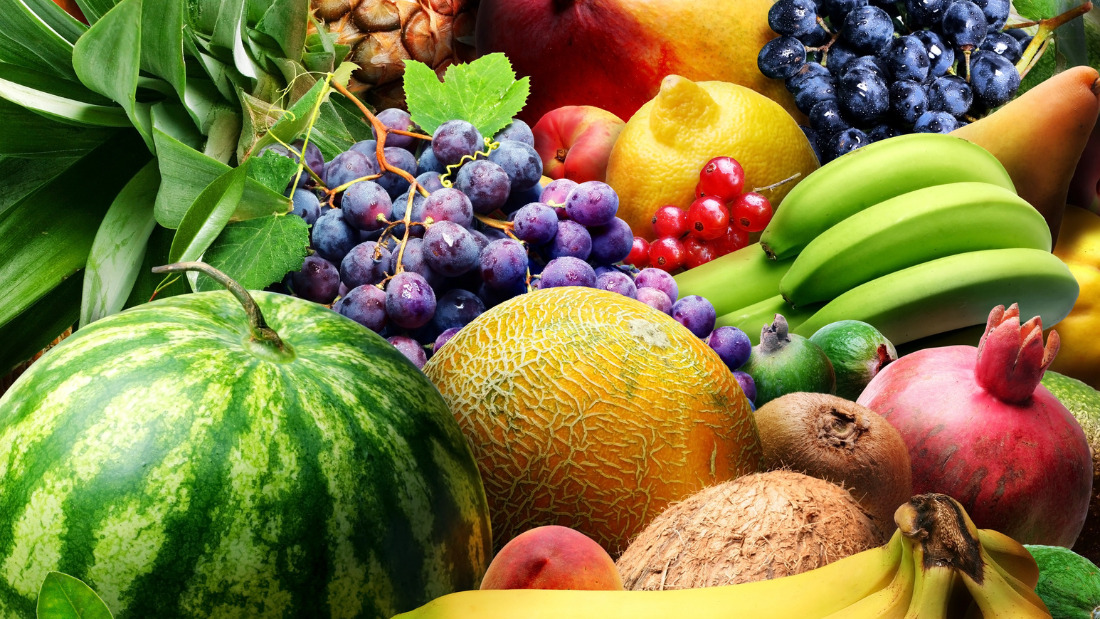Here is the good news in nutrition. What can you eat more of? In Australia, 48.5% of adults are eating the recommended 2 or more serves of fruit a day(1), which means more than half of us can eat more fruit. As a nation, we are closer to meeting the recommended number of serves of fruit, than vegetables.

What is a serve of fruit?
The Australian Dietary Guidelines(2) promote 2 serves a day for adults and 3 for teenagers.
A serve of fruit is equal to any one of the following suggestions:
- a medium sized apple or pear or orange (150g)
- 3 small pieces of fruit e.g. apricots or plums
- 1 cup of stewed, preserved or canned fruit (with no added sugars)
- 30g dried fruit e.g. 1 ½ tablespoons sultanas, 4 dried apricots
How to choose your fruit

Local in-season fruit is a great choice for morning and afternoon tea. A fruit platter is a popular option at work and at home. Research shows that cut fresh fruit is more desirable than whole fruit. Fruit salad makes a tasty dessert and snack too. In colder climates warm stewed or preserved fruit with breakfast, as a snack or for dessert is really appealing. Pears and apples stewed with spices (cinnamon, cloves, star anise) are delicious. Warm berry compote is another great option with breakfast. It also makes a lovely dessert on its own, with pancakes or a homemade oven baked muesli crumble.
How many vegetables can we eat?
As a nation we are closer to meeting the recommended number of serves of fruit, than vegetables. Only 8.2% of Australians eat the recommended 5 or more serves of vegetables a day, and approximately one third of us have 3 or more serves of vegetables daily(1).
Current research (2017) indicates that 10 serves of vegetables is better for our health. So we can definitely eat more of these health-giving foods.
Serve sizes for vegetables were introduced in last week’s blog. Aim for ½ cup cooked vegetables or 1 cup of salad vegetables per serve.
We have to change our thinking about food, so tasty nutritious food becomes synonymous with fruit and vegetables.
Enjoy the Benefits

Fruits and vegetables provide a range of nutrients and antioxidants. Antioxidants are components within fruits, vegetables, herbs and spices, including some vitamins, minerals and phytochemicals (naturally occurring in plants) that provide health benefits. Research suggests that these components remove compounds that damage our cells (free radicals) and through additional mechanisms that are still being explored.
Make a Plan
Planning meals and snacks is a practical way to increase the variety and amount of fruits and vegetables that you eat. Allow for 2 fruits and at least 5 vegetables a day. Having a meal plan for the week means that you will create an accurate shopping list too. If you eat out regularly prioritise your vegetables. Order additional vegetables and salad, and try Asian restaurants as they usually offer a wide range of vegetable based meals.
There is plenty of incentive to eat more fruit and vegetables, including improved health and wellbeing, cost savings and enjoying the flavours of new combinations of vegetables in your meals.
(1) Australian Bureau of Statistics, Profiles of Health – Daily intake of Fruit and Vegetables, 7 June 2013, http://www.abs.gov.au/ausstats/abs@.nsf/Lookup/by%20Subject/4338.0~2011-13~Main%20Features~Daily%20intake%20of%20fruit%20and%20vegetables~10009
(2) National Health and Medical Research Council, Australian Dietary Guidelines, February 2013, http://www.eatforhealth.gov.au/guidelines